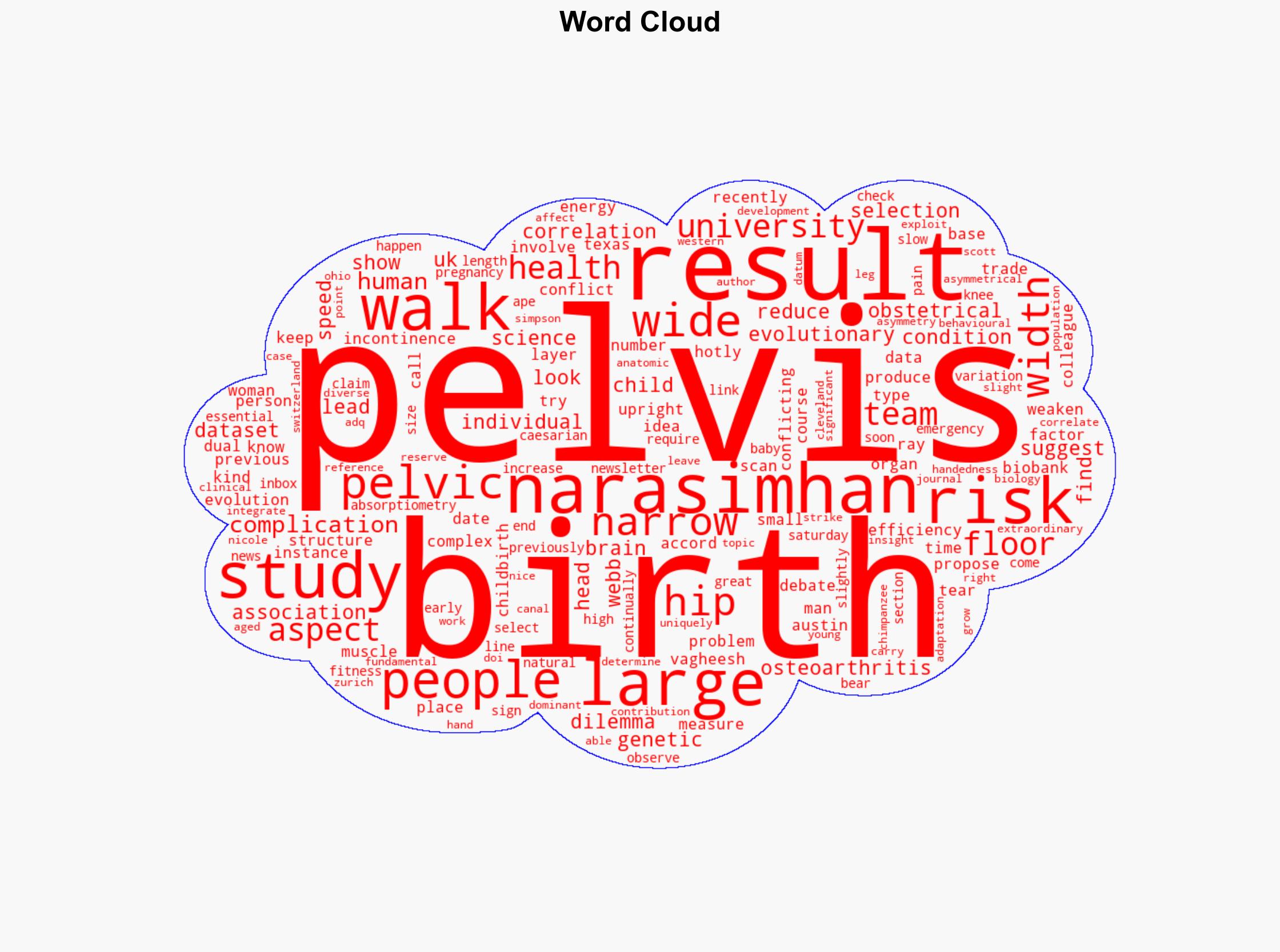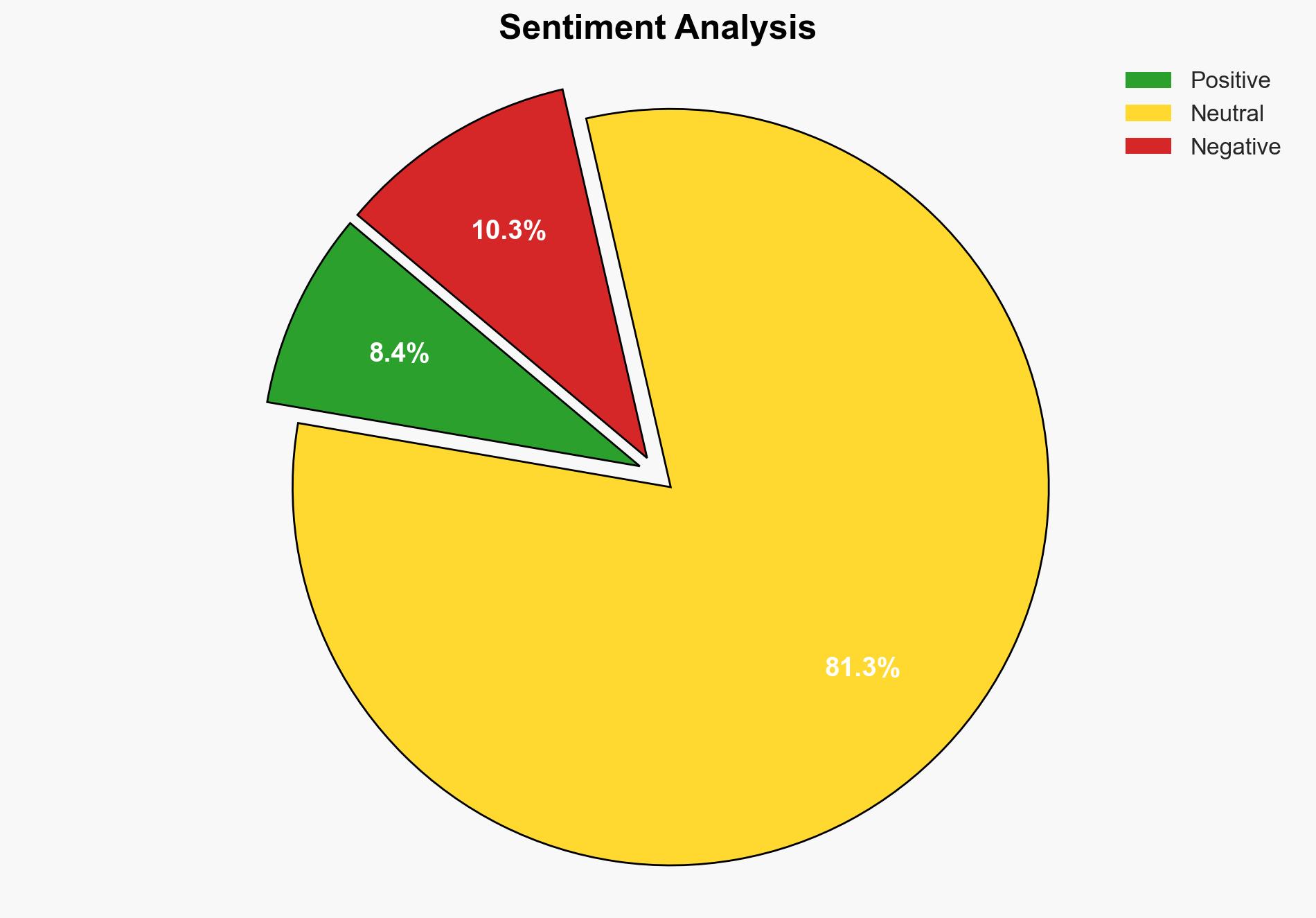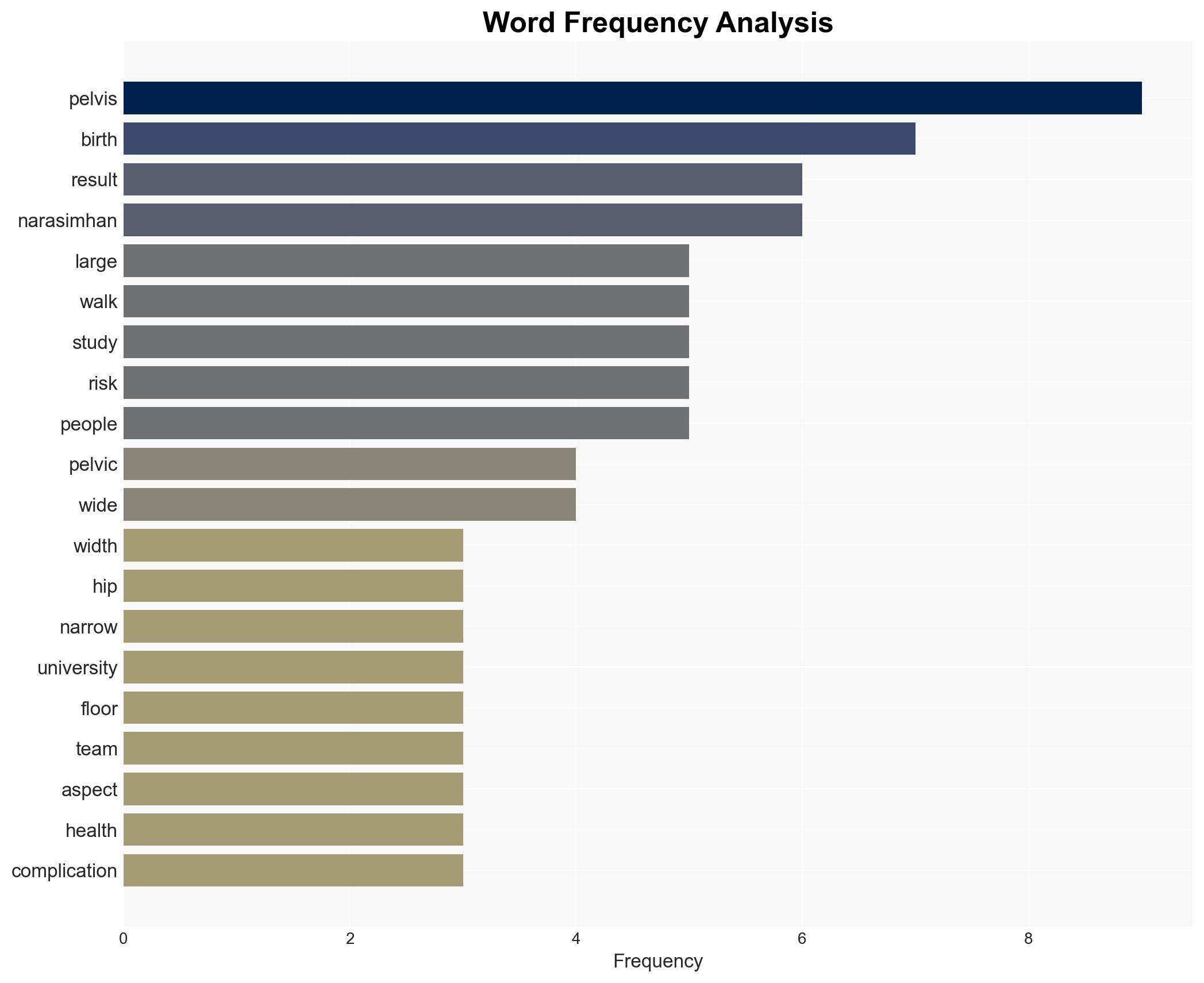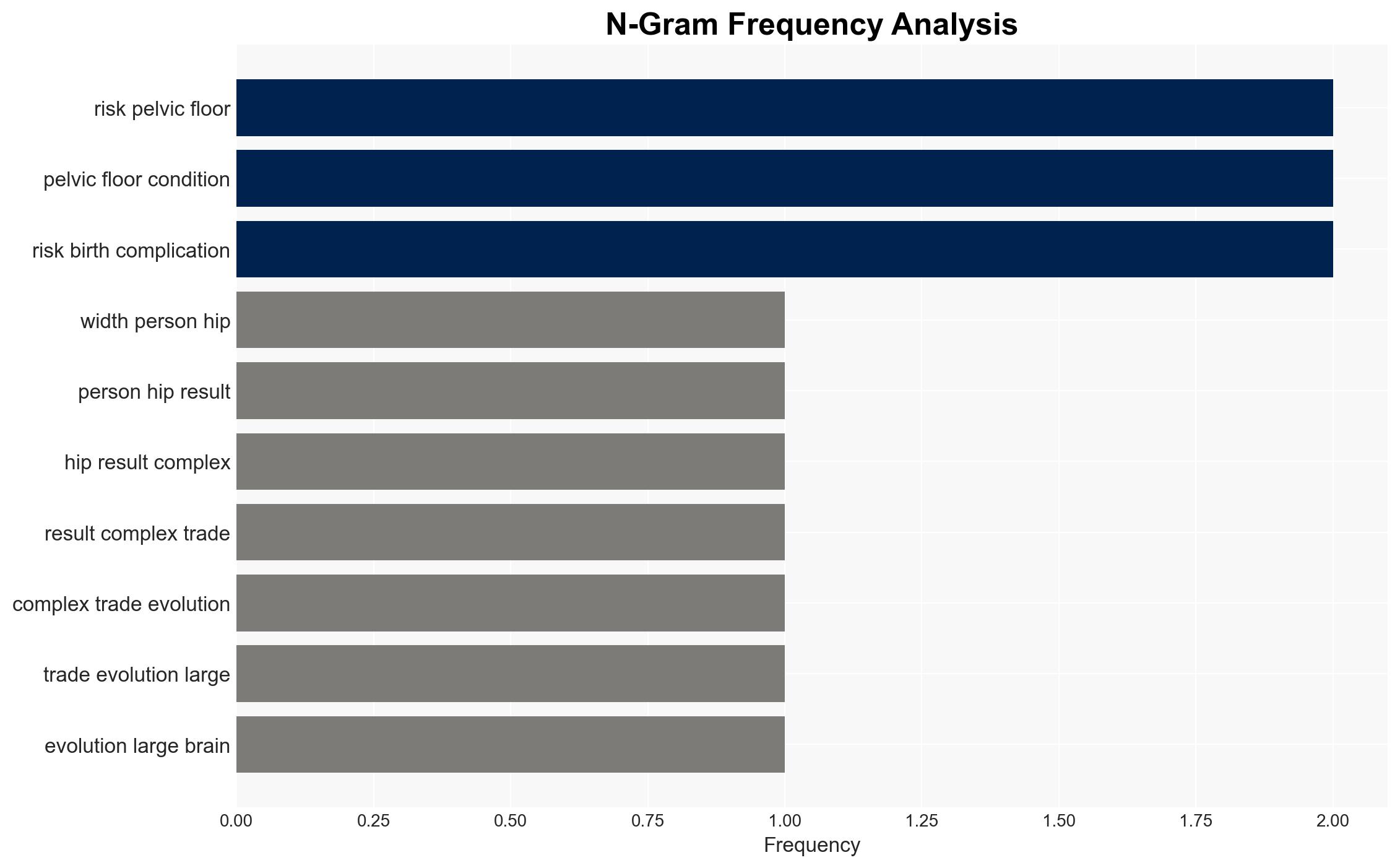The evolution of easier births means slower walking and pelvis issues – New Scientist
Published on: 2025-04-10
Intelligence Report: The Evolution of Easier Births Means Slower Walking and Pelvis Issues – New Scientist
1. BLUF (Bottom Line Up Front)
Recent research highlights a complex evolutionary trade-off between the development of larger human brains and the adaptation for upright walking, leading to variations in pelvis width. This has implications for childbirth, walking efficiency, and pelvic health. Key findings suggest that wider pelvises reduce childbirth complications but may impair walking speed and increase pelvic floor-related conditions. Conversely, narrower pelvises enhance walking efficiency but pose higher risks during childbirth and for certain musculoskeletal conditions.
2. Detailed Analysis
The following structured analytic techniques have been applied for this analysis:
General Analysis
The study, utilizing data from the UK Biobank, analyzed 31,000 individuals to explore the relationship between pelvis structure, genetic variations, and health outcomes. It confirmed that wider pelvises are associated with reduced birth complications but slower walking speeds and increased risks of pelvic floor disorders. The research also noted that narrower pelvises are linked to faster walking but higher risks of birth complications and osteoarthritis. No correlation was found between pelvis width and pregnancy duration, aligning with previous studies on human birth timing compared to other great apes.
3. Implications and Strategic Risks
The findings have significant implications for healthcare systems, particularly in obstetrics and orthopedics. The increased understanding of pelvic structure impacts could influence prenatal care strategies and orthopedic treatments. Additionally, the study’s insights into natural selection and evolutionary biology may inform future research in human development and genetics. Potential risks include increased healthcare costs due to the management of pelvic-related conditions and the need for specialized medical training.
4. Recommendations and Outlook
Recommendations:
- Enhance prenatal care protocols to account for variations in pelvis structure, potentially reducing emergency interventions.
- Invest in orthopedic research and training to address the long-term impacts of pelvis-related conditions.
- Encourage interdisciplinary research to further explore the evolutionary aspects of human development.
Outlook:
In the best-case scenario, advancements in medical understanding lead to improved maternal and orthopedic health outcomes. In the worst-case scenario, failure to adapt healthcare practices could result in increased complications and healthcare costs. The most likely outcome involves gradual integration of these findings into medical practice, improving patient care over time.
5. Key Individuals and Entities
The report references Vagheesh Narasimhan and his colleagues, who conducted the study using data from the UK Biobank. Their work contributes to the ongoing debate on the obstetrical dilemma and the evolutionary trade-offs in human development.




